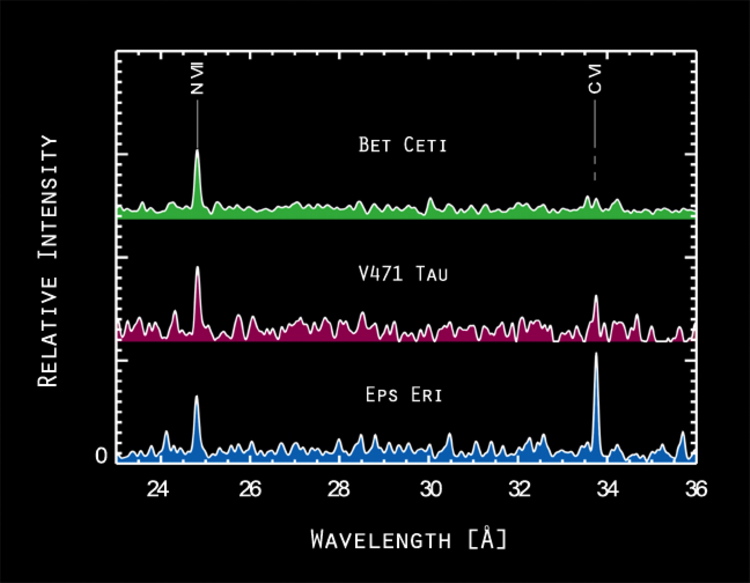
 Credit: ASA/CXC/SAO/J. Drake et al
Credit: ASA/CXC/SAO/J. Drake et al
When Two Become One Become Two
Stars are often found in pairs. These pairs, bound by gravity, orbit each other in a type of cosmic dance. Sometimes the dancers can get too close - when this happens, one member can enter the outer atmosphere of the other, and get engulfed, in what astronomers call the "common envelope" phase. An outcome may be that the two stars ultimately merge into one. It's been a question whether a companion star could survive the deep embrace of the common envelope. Now astronomers think they may have an answer, at least in the case of one star, called V471 Tau. V471 Tau is composed of a white dwarf star and a star like the sun, though slightly cooler and less massive. An observation with the Chandra X-ray observatory of the system suggests that in the distant past, when the white dwarf star was a red giant, its companion orbited inside the atmosphere of the giant star. The Chandra X-ray spectrum of V471 Tau, in the middle panel, is compared to that of Beta Ceti (top), a red giant star, and Epsilon Eridani (bottom), a solar-type star. The carbon and nitrogen line features in V471 Tau should be similar to those in Epsilon Eridani, in which the carbon feature is higher than the nitrogen feature. But in V471 Tau, the nitrogen feature is higher than the carbon feature, like it is in the red giant star. This suggests that the companion in V471 Tau has been contaminated by the atmosphere of a red giant during the common envelope phase.
Last Week *
HEA Dictionary * Archive
* Search HEAPOW
* Education
Each week the HEASARC
brings you new, exciting and beautiful images from X-ray and Gamma ray
astronomy. Check back each week and be sure to check out the HEAPOW archive!
Last modified Tuesday, 27-Feb-2024 10:10:19 EST


